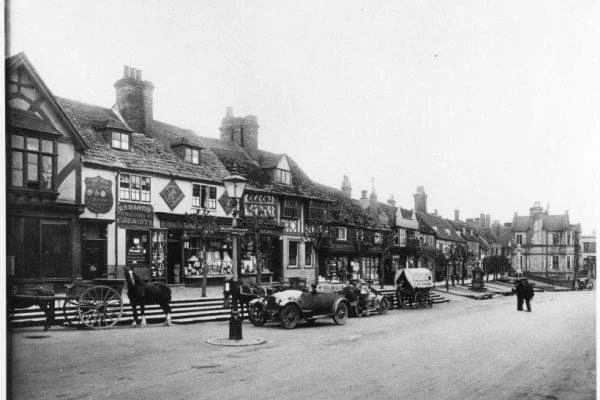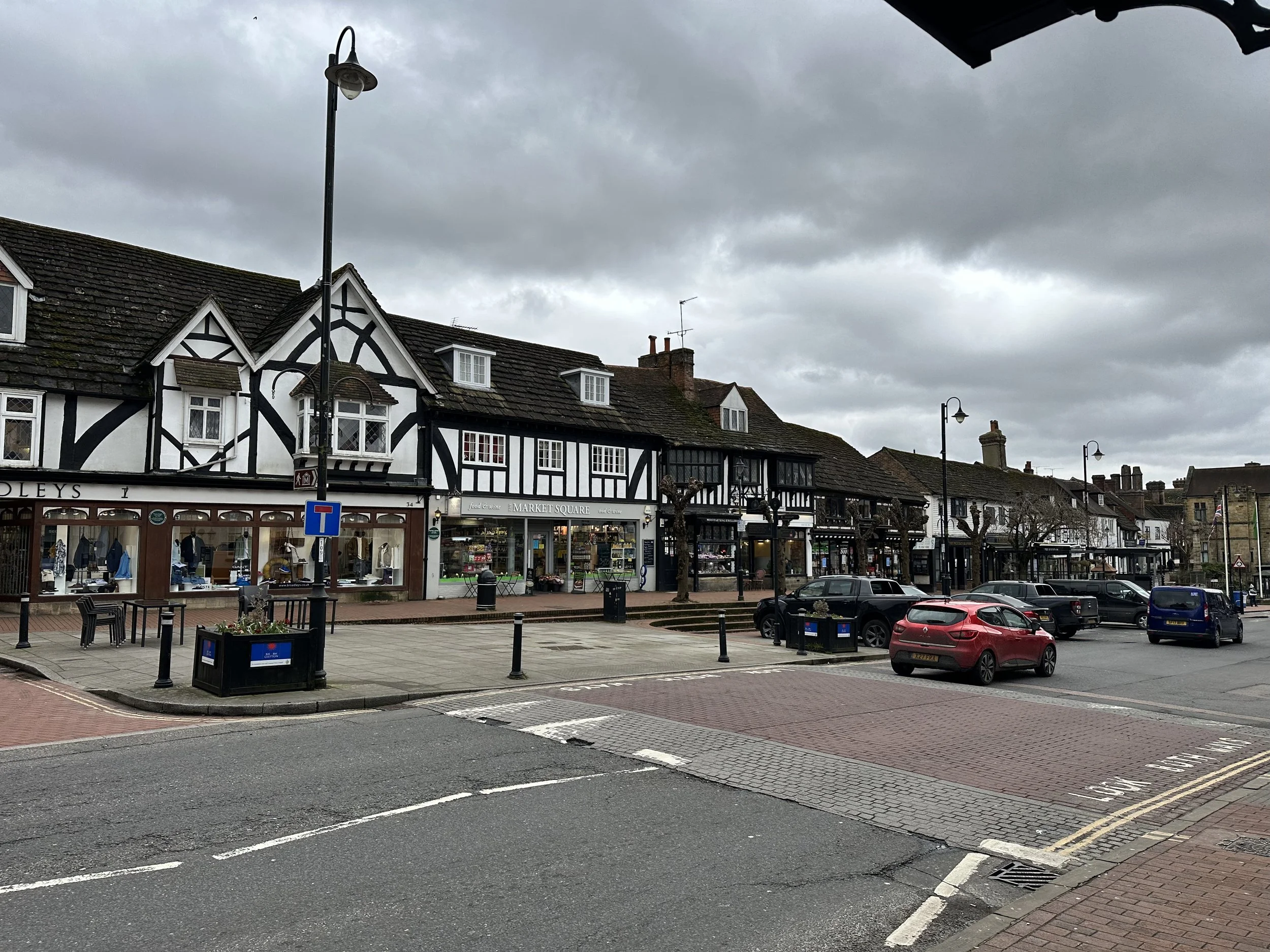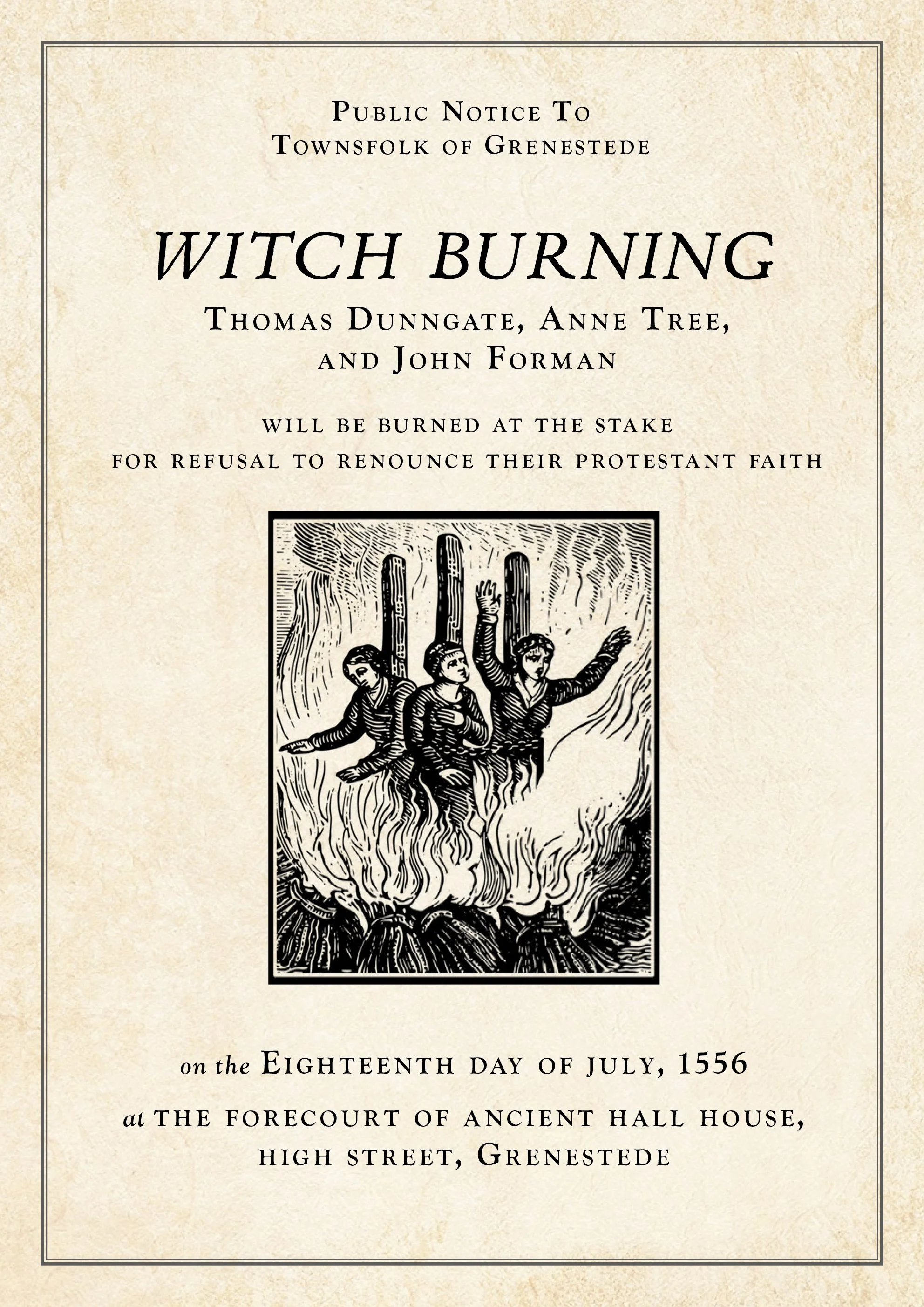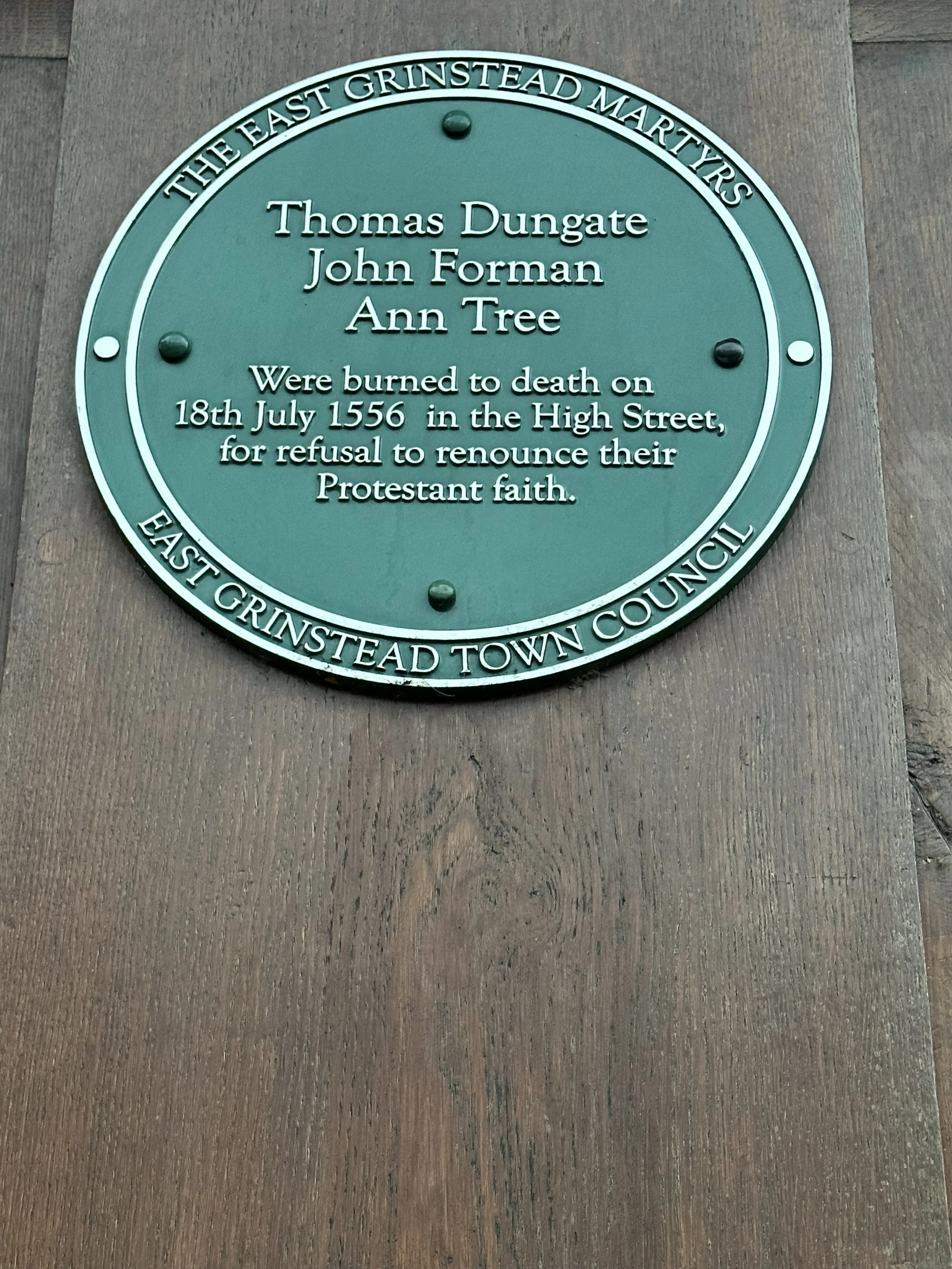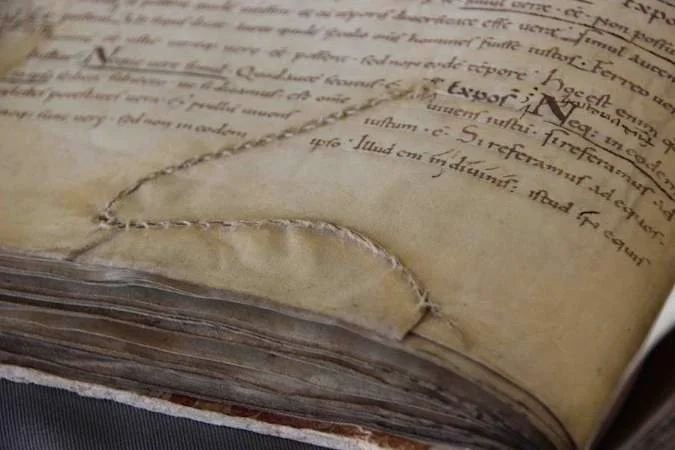Week 6: Noticing the Ignored | Experiential drawing, capture, writing, recording, play, photography
By the end of this week, you should be able to:
1. Research, explore and analyse different ways of seeing, looking and capturing.
2. Document, explore and evidence your ways of seeing, thinking and observing.
3. Imagine and communicate something unique.
4. Communicate your interpretation visually.
5. Document and communicate your working process on your blog.
6. Participate in and reflect upon debate on the ideas wall.
7. Manage your independent learning through good planning and self-direction.
East Grinstead - The High Street where I work is steeped in history
High Street 1864
High Street 1912
High Street 2023
High Street East Grinstead is full of history from the 15th Century. The pictures above capture the same spot in history, captured centuries apart. This is the same spot that I chose to document in my workshop challenge: the site of the witch burning for their refusal to renounce their protestant faith.
Workshop challenge wk 6 - Recording information from my chosen geographic area
The Task - Select & survey
task one - I have chosen the High Street in East Grinstead where my studio is based. First known as Grenestede, records show it dates back to the 13th Century, probably by Gilbert de Aquila who held land given to his family by William the Conqueror.
It lies in the middle of the Weald on a high ridge, halfway between London and the South Coast. The High Street still has the original timber-framed house from the 14th Century and the wide street accommodated weekly cattle markets. It also had two members of Parliament and a criminal court (now Judges Close) and gallows.
I always knew the High Street was steeped in history so I decided to go out and have a closer look by visiting the local museum which by contrast to the high street is a very modern building.
Documenting the past - I took my camera and decided to photograph and document the details of centuries previous.
Text
What is unique about East Grinstead High Street?
I took my camera and decided to photograph and document the details of centuries past.
The High Street itself is obviously ‘Old England’ with its tudor-framed buildings, but I loved the closer details. Here I have captured the door ironworks, stone textures, lead window frames, doorway detailing for coaches, stone mason finishes, hooks signage (not sure what for by Judges Close?!) and drinking fountains.
The plaque that took my most interest was a memorial plaque to the Martyrs (witches) that were burned at the stake in 1556 for their refusal to renounce their faith.
Burning at the stake must have been a truly horrible death. This event took place on a Saturday, which was market day, presumably for the maximum impact on the townsfolk.
This made me curious. Did they advertise the burning in 1556? It was long before the internet, telephones, and most printed publications.
Was there reserved seating at the front for dignitaries and the higher-ranking officers and clergy? Was it a family affair with all the children attending?!
Unfortunately, West Sussex Census records are only available from 1841. Also back in the 15th century it was known as Grenestede. It is likely the town had a much smaller population and the news of the Protestant Martyrs was probably spread by word of mouth.
Cloth and Paper Parchment paper had just been invented, and the first press is thought to have been introduced by William Caxton. (c. 1422 – c. 1491) in 1476, so posters were possible although somewhat rudimentary.
I decided to create my own poster based on my findings. One of the most time-consuming elements was finding the correct ‘tone of voice’ of the 15th century and I probably spent was too long looking at what typefaces and manuscripts had been created in this era.
Looking at examples of typefaces and script writing from 15th Century
Manuscripts and parchment example from 15th Century
Time lapse video of everyday life in 2023 at the historic site where the witches were burnt in 1556.
Workshop Challenge - Final piece
Reflection:
I absolutely loved this task and felt that I hadn’t even touched the surface of history to find and document. What fascinated me the most is the people going about their everyday life in 2023, over the site unaware of the history. (see time-lapse video). I really hope I can revisit this projet when I have more time.
References:
East Grinstead Museum - A History of our town Exhibition
https://www.eastgrinsteadmuseum.org.uk/
English Heritage - A journey into witchcraft beliefs
https://www.english-heritage.org.uk/learn/histories/journey-into-witchcraft-beliefs/
Great British Life Magazine
https://www.greatbritishlife.co.uk/homes-and-gardens/places-to-live/22580455.history-east-grinstead/
William Caxton first person to introduce a printing press to England in 1476
https://en.wikipedia.org/wiki/William_Caxton
West Sussex Record Office
https://westsussexrecordofficeblog.com/2017/10/30/witchcraft-and-the-wicked-women-of-sussex/

